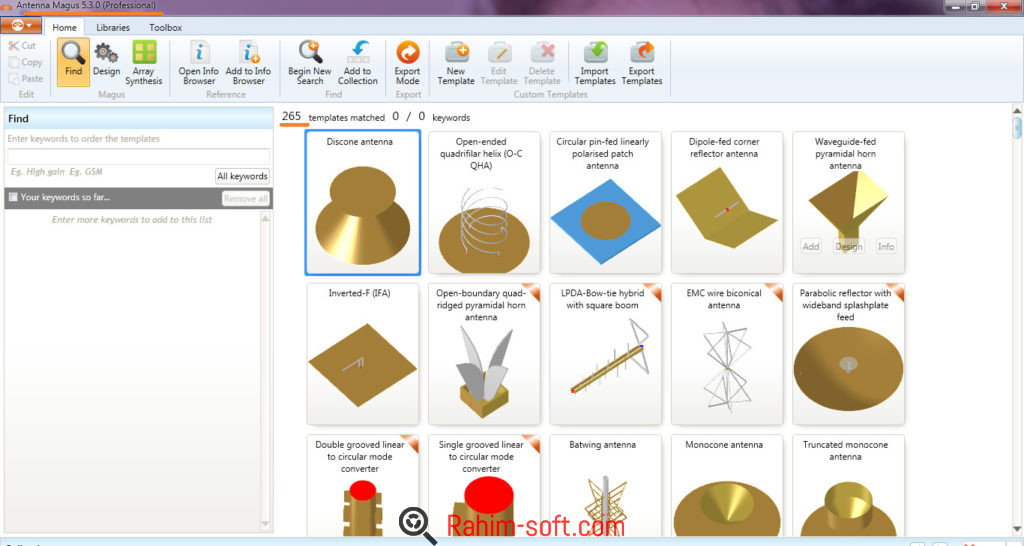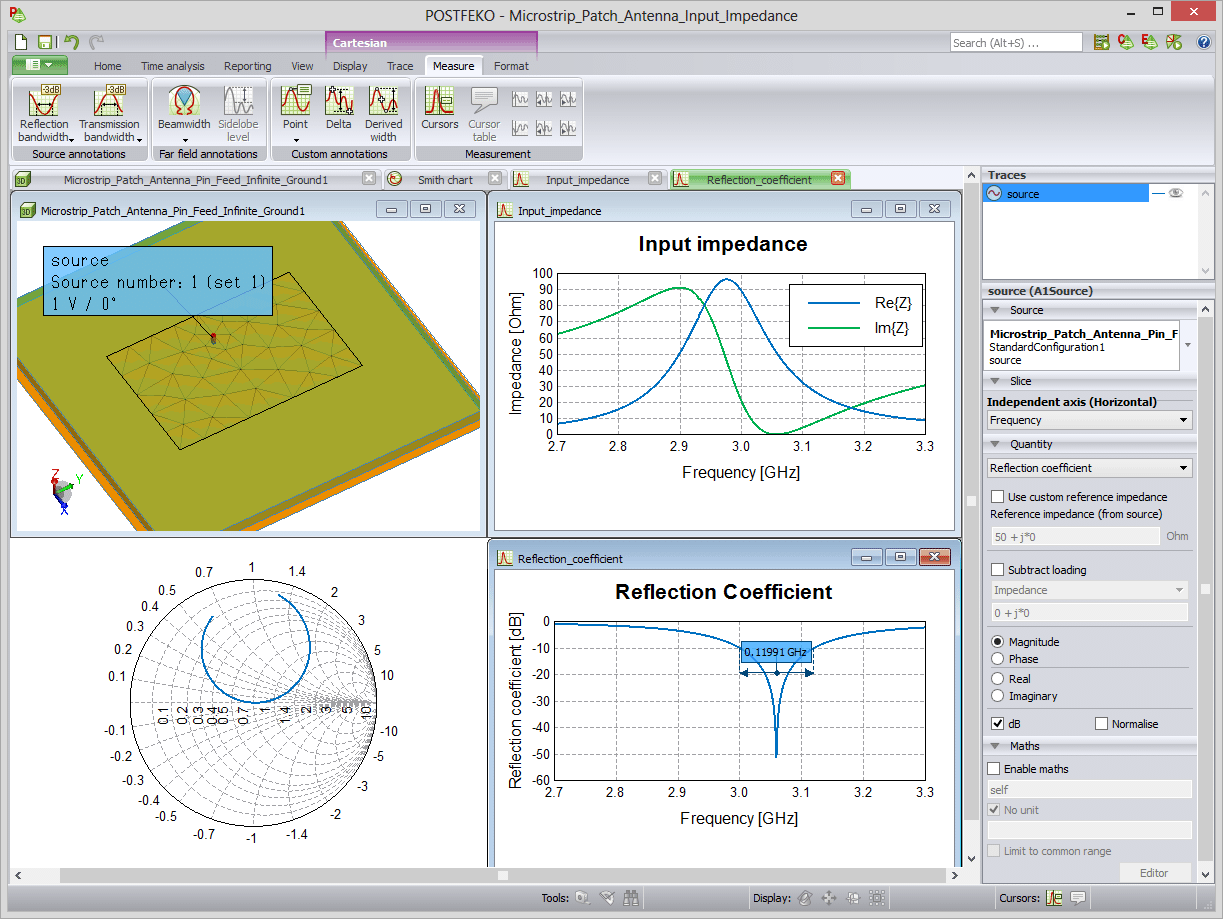Computer Antenna Modeling Simplified – KE5KJD An exposure to the benefits of computer modeling using software. Compiled from the Internet for the AARA Ham Radio Club - 2010 Archie asked me a few months ago if I would be interested in presenting some information to the club about antenna modeling. Not being an expert in the. With the proliferation of personal computers and affordable (even free) software, antenna modeling has become a popular amateur activity. With modeling you can determine the pattern, feed point impedance and even the SWR of your antenna system before cutting one piece of wire or one tube of aluminum.
- Antenna Modeling Software For Windows 10
- Antenna Modeling Software For Linux
- Antenna Modeling Software For Mac
- Eznec Antenna Modeling Software
Antenna modeling used to be the domain of scientists and engineers with very expensive antenna ranges covering acres and acres of land strewn with expensive equipment. With the proliferation of personal computers and affordable (even free) software, antenna modeling has become a popular amateur activity. With modeling you can determine the pattern, feed point impedance and even the SWR of your antenna system before cutting one piece of wire or one tube of aluminum. This can save an awful lot of tree and tower climbing.
Software Modelling your Vertical antenna ground radials with MMANA I’ve been scratching my head for years how to model an appropriate ground with my ground mounted Vertical Antenna radials. I’d like to thank Sigi, DG9BFC for clearing this up for me. With the proliferation of personal computers and affordable (even free) software, antenna modeling has become a popular amateur activity. With modeling you can determine the pattern, feed point impedance and even the SWR of your antenna system before cutting one piece of wire or one tube of aluminum.

A (Free!) general-purpose user-oriented free software program for numerical electromagnetic antenna design, antenna modeling, and/or antenna analysis specifically:
Analysis of Thin-Wire Structures in the Presence of Finite Ground. Another antenna analysis software Alternative to Numerical Electromagnetic Code (NEC) for analyzing insulated or bare thin wire antenna structures over a lossy or perfect groundplane based on the moment method. { Click here for an offsite explanation of various Electromagnetic and antenna modeling techniques including the moment method.}
At this website you will find:

- Example pages,
- User's Manual (from Thesis),
- the quick reference for the user's guide,
- a Systems Manual (Theory of Operation from Thesis),
- the Original Thesis ,
- and of course a place to Download Source Code (FORTRAN) and PC executables.

Information collected and maintained by:
Ray L. Cross. WK0O
Latest version 3.2 in Single and Double precision.
The source code and PC executables are provided free in order to promote greater awareness and use of antenna analysis tools among students, amateur radio operators, professionals, etc. The source code and executibles can be freely exchanged between individuals and companies as long as it is not sold.

Although it is not a 'Windows' point-and-click type program it is extremely usable if you are not scared off by the idea of having toformat your own input with ASCII editors and format the output with editors and spreadsheet programs.
With ASAP you can analyze wire antennas or antennas that can be approximated by grids or arrays of wires for properties such as:
- Double Check List of Most Common Problems (quick reference for the user's guide)
- Run the Input File Through ASAP - (program available in Download area)
- Output File is Analyzed - (directly or post processed - see Examples )
- From the thesis abstract:
- 'Previous computer programs to solve the electro-magnetic equations for thin-wire radiating structures have been coded in one of two forms; the very limited specialized form or the comprehensive all-encompassing form. Thus, the beginning user, engineer or student, must possess expertise in computer programming as well as in electro-magnetic theory. This thesis develops a computer program which can be used by the student to gain insight into wire radiating structures and, at the same time, be used by the engineer to obtain the expertise necessary to utilize the more comprehensive programs.' - Jerry Wayne McCormack, December 1974
- R.P. Haviland, 'Programs for Antenna Analysis by the Method of Moments', The ARRL Antenna Compendium , Vol. 4, American Radio Relay League, Newington, CT, U.S.A, 1995, pages 69-73.
Distribution is Permitted as Long as Its Free
The source code for ASAP was originally contained in Government reports that where not copyright and were marked 'Approved for public release; distribution unlimited' (See the original Report Documentation Page ). Mr. Jerry McCormack, the author of the thesis and this version of the code, considers the source code to be in the public domain. The electronic version of the source code available here is a direct descendant of the original 1974 punch cards (with corrections and slight improvements) and may be redistributed as long as credit and proper reference to the thesis is given.
The executable versions of ASAP that are made available at this website were compiled by Ray L. Cross are made available for convenience only and may not be redistributed in software collections or be sold without prior permission.
Although the original paper version of the thesis is in the public domain, the electronic version was converted at great investment of time and may not be redistributed in software collections or be sold without prior permission.
However, the source code, the executibles, and even the electronic or paper version of the website can be freely exchanged between individuals and companies as long as it is not sold.
For permissions in other circumstances (as in reposting at other websites or to bundle for a collection of programs) contact the curator of this website. (Note: I will probably give permission as long as the above conditions are met -- I just want to know how it is being distributed. Thanks.)
Why and How I Came to Have This Code (by R.L. Cross)
This antenna analysis code is not necessarily 'better' than any others but I personally have grown to like the input format more than some others. During my career as an electrical engineer I have had access to a variety of antenna analysis codes (including NEC, and proprietary codes) on a variety of computers (including VAX mainframes, IBM mainframes, Sun Workstations, and PC's) I usually preferred ASAP if the problem was within its capabilities.
I was first introduced to the code sometime in the 1986-1988 time frame by Mr. Jerry McCormack who was my boss at the time. Mr. McCormack had authored a Master's thesis in 1974 while he was at the Naval Postgraduate School upon which most of this web pages are based. In his thesis he had modified a computer thin wire antenna analysis code produced for a government report by J.H.Richmond. The main modifications were to make the input more 'english-like' and to add the presence of the ground plane. The 'english-like' input format is what makes the program easier to learn (perhaps) than other more complicated programs like the Numerical Electromagnetic Code (NEC) which do everything but can be intimidating at first.
It is not my purpose to make a comparison/contrast between various antenna analysis programs available to experimenters and amateurs as this has already been done in the article:
Haviland's article is the only one to come to my attention in the last ten years that mentions the original J.H.Richmond. code and compare it to other codes that are available.
I should point out that this site in no way is intended to insult or down play the usefulness of commercially available antenna analysis packages. There are a number of programs that you have to pay for that are still affordable to both professional and amateur alike. These commercial packages have many desirable features,especially in the ease of input and output. However, for people whowish to dabble or even hard-core fanantics there are many still quiteusable older computer codes available for free on the world wide websuch as ASAP (this site) NEC-2, MININEC, and more exotic less heard of codes. It shouldbe said that most of these are not 'Windows' point-and-click programs;they are usable if you are not scared off by the idea of having toformat your own input with ASCII editors and format the output witheditors and spreadsheet programs. A good place to start looking for these codes is on the University ofMissouri - Rolla Electromagnetic Compatibility Website. There are links to this site listed near the bottom of this page. This site has many items and links of interest to anyone interested in electromagnetics in addition to the antennamodeling software.
The ASAP program offered 'for free' here is an extension of the original. The thesis discusses the original code and the improvements that were made. The capabilities of ASAP can easily be ascertained by skimming over the examples and the user's manual.
I only have limited time to respond to questions or comments so please understand if I don't get back to you right away (or at all). Major errors that are pointed out will be (eventually) corrected on the pages. Especially interesting uses of the program would be appreciated but due to time limitations may not be acknowledged.

PLEASE read all the documentation first before asking me a question. I spent far more time getting these pages put together than I planned. I have many other interests that I put off by constructing these pages. I don't want the pages to become a stone around my neck.
Enjoy,
Antenna Modeling Software For Windows 10
Ray L. Cross, , WK0O,
BSEE, MSEE,
and sometimes Webpage CuratorRay's Homepage
Computational Electromagnetics Links of Interest (Not Associated With this webpage).
UMR EMC LAB: Codes Available on the Internet
Computational Electromagnetics Links
Overview of Numerical Electromagnetic Methods
UMR EMC LAB
{Note: Back in December 1997 to my attention that R.P. Haviland has another version of Richmond's code (which he calls 'ThinWire') available in a collection of programs on CDROM. I have no connection with this CDROM collection in any way. [I used to have a link to where this could be found but it is no longer good and I have not been able to find another link. ]}
Original Thesis
User's Manual (from Thesis)
The quick reference for the user's guide.
Systems Manual (Theory of Operation from Thesis)
Antenna Modeling Software For Linux
Download Source and PC executables
Antenna Modeling Software For Mac
Examples page
Eznec Antenna Modeling Software
Last modified on: 3 November 2007